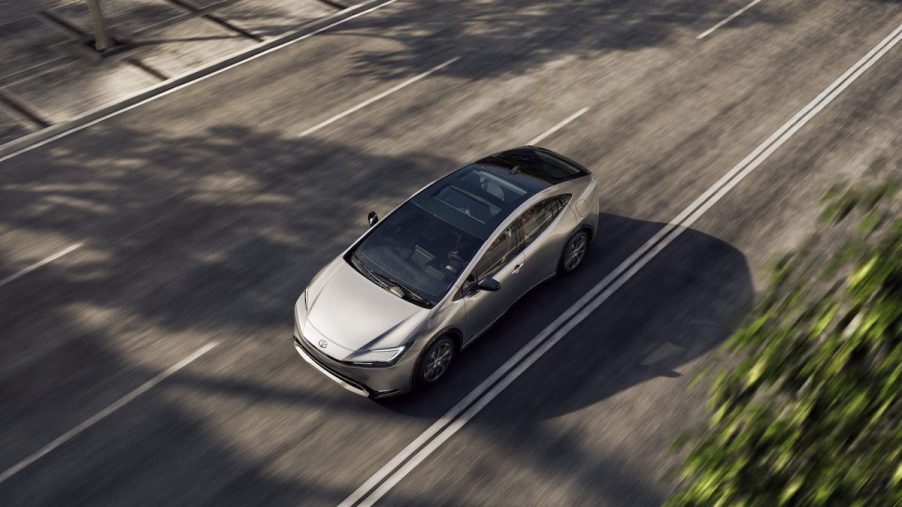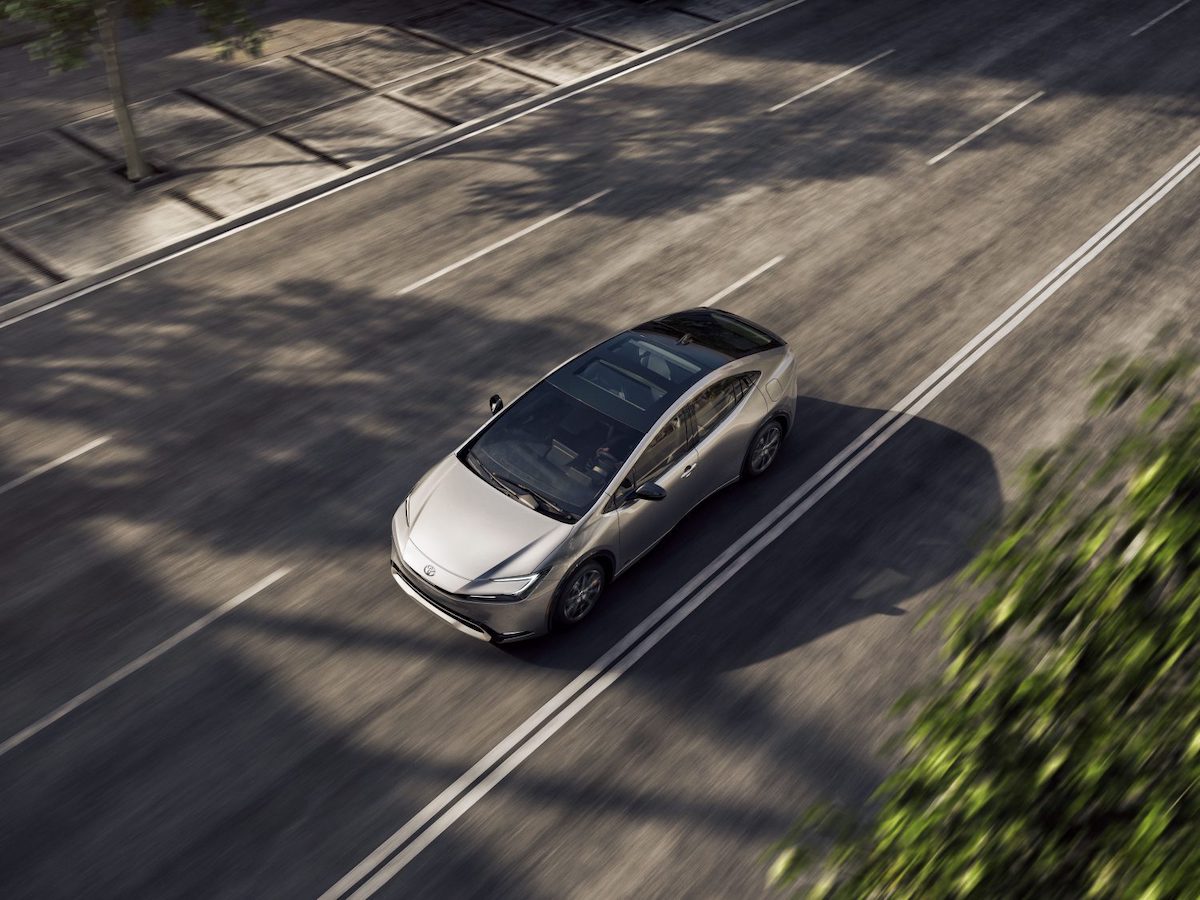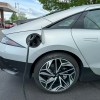
2023 Toyota Prius vs. 2023 Toyota Prius Prime: What’s the Difference Between These Toyota Models?
For the 2023 model year, Toyota knocked it out of the park with the new Prius and plug-in Prius Prime. The coupe-like body style, lower and wider stance, reimagined lighting signatures, and fastback appearance is stunning.
Given their attractiveness, buyers will likely be preparing to pick one up when they go on sale—hopefully by Christmas. But which one is the better option? Although they’re nearly identical, there are three areas where the Prius and Prius Prime differ.

Both are hybrids, but one is a plug-in
Speed and power were never in the wheelhouse of the Toyota Prius or the Prius Prime. However, the 2023 models are the fastest and most powerful yet.
Both vehicles have 2.0-liter hybrid powertrains ditching the fourth generation’s 121-hp 1.8-liter four-cylinder. Moreover, Toyota scrapped the previous nickel-metal-hydride battery for a lithium-ion unit.
The front-wheel drive (FWD) Prius has a combined 194 hp but jumps to 196 hp in all-wheel drive (AWD) versions. The Drive asserts that FWD models hit 60 mph from a standstill in just 7.2 seconds.
Higher-priced AWD models cut that time by 0.2 seconds quicker than the last-generation Toyota 86. Prius Primes are only available in FWD, though. However, that doesn’t mean it’s any slower. The Prius Prime packs 220 hp and can snap a speedo in a remarkable 6.6 seconds.
Although the Prius’ fifth-generation hybrid system will achieve 57 mpg, the Prius Prime has it licked on eco-driving. The previous Prius Prime’s 25-mile electric-only range has been upgraded by 50 percent, offering around 38 miles of electric driving range.
Both generate electricity, but one can retrieve it from the Sun
Whereas the Prius must rely on fossil fuel to generate electricity, the Prius Prime can generate it from the Sun. Featured on the Prius Prime is a set of roof-mounted solar panels. Even though they won’t recharge the car’s battery, they will provide additional power for in-cabin accessories.
For example, the Prius Prime’s solar capabilities will power the radio, the wireless charger, and the six USB ports while parked. Toyota says the car’s air conditioning can be powered photovoltaically while on the move.
The Japanese automotive giant also implemented a clever design concealing the electrodes for a seamless, polished appearance atop the liftback.
Both have outstanding driver safety features, but one makes driving in congestion easier
The Toyota Prius is fitted with the latest generation of Toyota’s Safety Sense driver assistance suite. There are a myriad of functions, from radar-guided cruise control to parking sensors and cameras all around. However, the Prius Prime has one better; it can drive itself.
As a first for Toyota and the Prius Prime, a Traffic Jam Assist feature can mitigate stress caused by stop-and-go driving. While the Dynamic Radar Cruise Control and Lane Tracing Assist is activated, the Prius Prime can take over in slower conditions.
Under 25 mph, the feature will provide acceleration, braking, and hands-free steering control under driver supervision. However, the vehicle’s driver monitor camera must confirm the driver has their eyes on the road to engage in hands-free operation. When traffic speed increases beyond the 25-mph limit, the system will prompt the driver to retake control.
Should you buy the 2023 Toyota Prius or the 2023 Toyota Prius Prime?
With nearly identical looks, trim packages, hybrid fuel economy, and safety standards, there isn’t much to differentiate between them. Unfortunately, prices have not been released, so it’s hard to tell. Though, the Prius Prime will most likely cost more than the hybrid-only Prius.
Many may think that government tax credits can split the difference, but wait. Electrek reports that Toyota North America surpassed the 200,000-vehicle threshold for EV sales this year.
Therefore, Toyota’s federal tax credits will be phased out. The Build Back Better bill will give EV buyers a $7,500 tax credit through 2026, but only under the aforementioned manufacturing threshold.
AP reports an additional $4,500 would be available, but only for those made in a U.S. plant under a union-negotiated collective bargaining agreement. Currently, only Ford, General Motors, and Stellantis vehicles qualify.
As of now, 2017–2022 Prius Primes qualify for a $2,251 tax credit through March 23, 2023, as the plan phases out. Beginning April 4, 2023, through September 30, only $1,126 is available. After that, any Toyota purchased is no longer eligible for tax credits. Moreover, there is yet to be news of if the 2023 Prius Prime will qualify for the waning credits.
Regardless, if you’re commuting in a large metropolitan area, the Traffic Jam Assist will likely be a welcome feature. Depending on how far that commute is, the 38 miles of electric-only driving could be favorable. If not, the regular hybrid Prius is an excellent selection.


